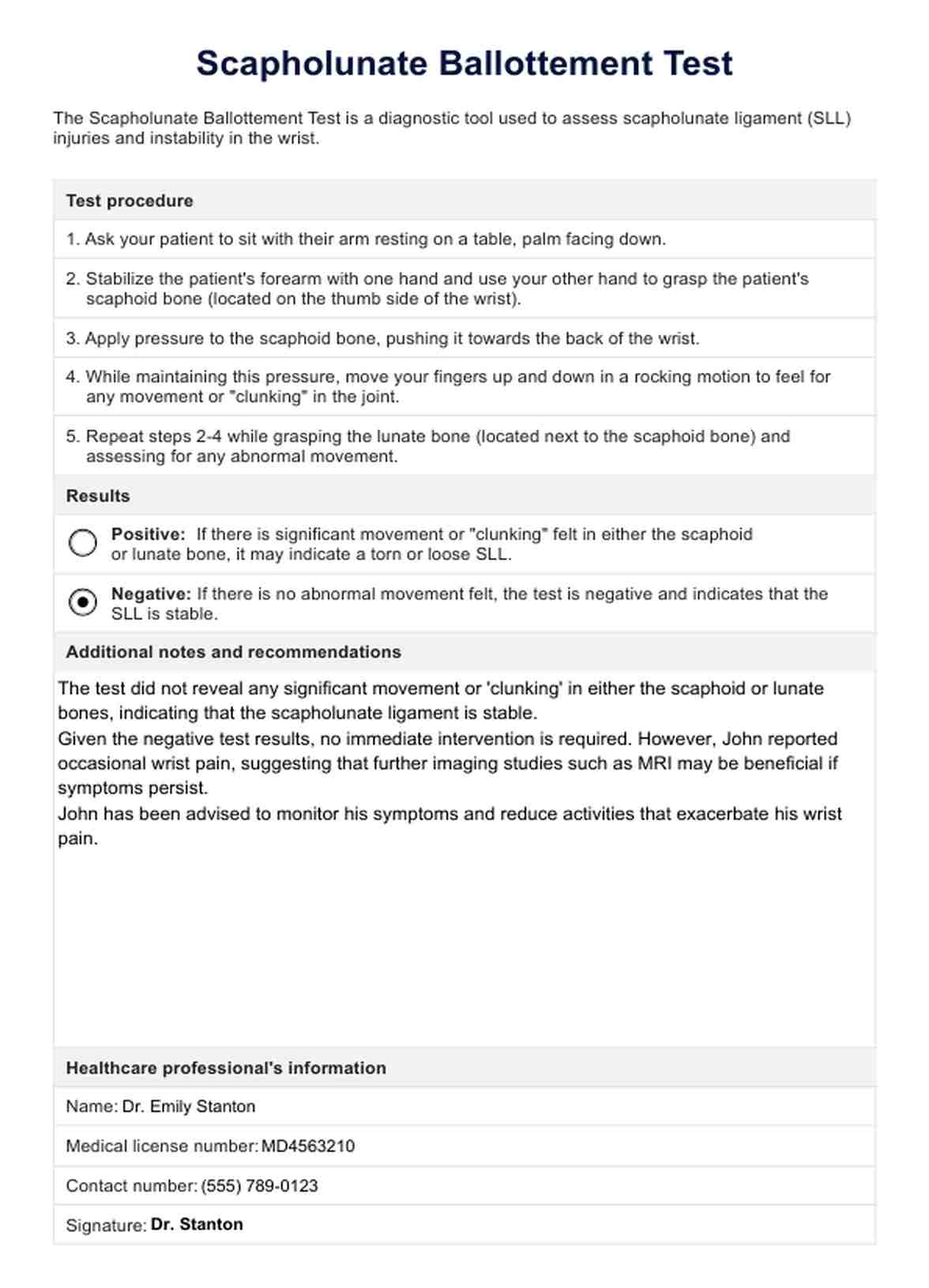The Scapholunate Ballottement Test assesses the integrity of the scapholunate ligament by applying direct pressure to detect instability. At the same time, the Scaphoid Shift Test, or Watson's test, is used to identify any shift or subluxation of the scaphoid under stress, which may or may not involve physical examination of the scapholunate ligament directly.

Scapholunate Ballottement Test
Learn how to conduct the Scapholunate Ballottement Test, interpret the results, and apply findings with our comprehensive guide and free template.
Scapholunate Ballottement Test Template
Commonly asked questions
A distal radius fracture often occurs near the wrist joint and can impact surrounding structures, including the scapholunate interosseous ligament. Due to the proximity, position, and interconnectedness of these anatomical features, such fractures may cause or exacerbate instability in the scaphoid and lunate bones.
Radial deviation involves moving the wrist towards the thumb side, which can stretch the scapholunate interosseous ligament and make any existing injuries more apparent. Clinical provocative tests, such as the Scapholunate Ballottement Test, use radial deviation and direct pressure applied by the thumb and index finger on the scaphoid bone to assess the integrity of the ligament.
EHR and practice management software
Get started for free
*No credit card required
Free
$0/usd
Unlimited clients
Telehealth
1GB of storage
Client portal text
Automated billing and online payments











